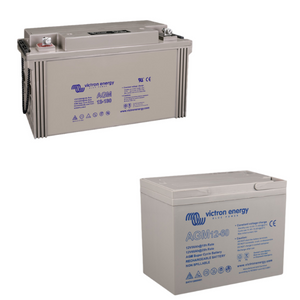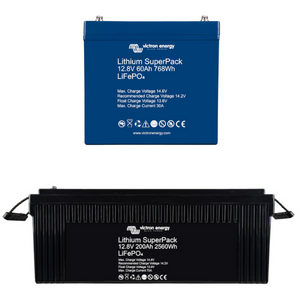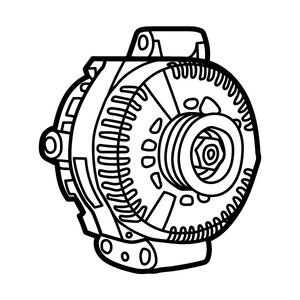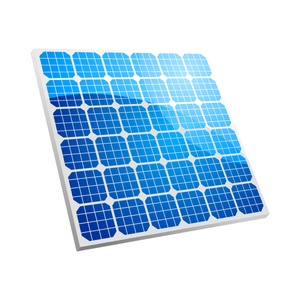How to size a mains, DC-DC or solar charger1 Comment7 March 2023 It's important to size your battery charger appropriately for the battery capacity and type of battery you have. If the current that your charger puts out is too large for your battery it can cause damage to it in the long term and reduce its lifespan. Conversely, if the charger is too small for the battery, it can take a very long time to charge. So, below we'll give you an overview of charging and advice on selecting the right size charger, along with some other factors to consider. 'C' Rating All batteries have a manufacturer's maximum recommended charge acceptance rate for optimum charging and maximum lifespan. This maximum charge acceptance rate is know as the 'C' rating and can often be found on your battery's data sheet. This rating in Amps (A) is expressed as a % of the battery's capacity in Amp-hours (Ah). For example, C20 would mean that the battery can accept a maximum charge rate in A of 20% of its capacity in Ah. So, a 100Ah battery with a rating of C20 could accept a maximum charge rate of 20A. Similarly, a 200Ah battery with a rating of C20 could accept a maximum charge rate of 40A, and so on. This same principle applies to batteries connected in parallel to increase capacity. If you have 2 connected in parallel then the capacity in Ah doubles, so the maximum charge rate you could use would also double. Lead acid / AGM / Gel With a lead acid battery (wet, AGM or Gel), the C rating is normally around C20, and a recommend output for a charger would be somewhere in the region of 10-20% of the overall capacity. For example, if you have a 100Ah AGM battery with a C rating of C20, we'd recommend a charger in the region of 10-20A output. You could use a 5A charger, but the bulk stage of charging where the charger is putting in constant current at the charger's maximum rate will take proportionally longer to charge - in this case, up to 4x as long as a 20A charger. You could also use a 30A charger, but bear in mind that it would not be ideal for maximising the life of the battery (the trade-off for faster charging is reduced battery life, but this might be something that you're happy to accept).
Lithium Lithium batteries can accept a much higher charge current and generally have a C rating somewhere in the region of C50, meaning that the recommended maximum charge current is typically 50% of the battery's overall capacity. So if you have a 100Ah lithium battery with a C rating of C50, the maximum charge current we'd recommend would be 50A. This ability to charge much faster is one of the appeals of lithium technology, along with a much higher number of lifetime charge/discharge cycles. Before purchasing a charger for lithium batteries, it is always worth checking whether the charger is suitable for use with lithium batteries (it should have a dedicated lithium charge setting). Most of the chargers in our range are suitable, but some (for example this one) are only suitable for batteries based on lead-acid technology (open, sealed, AGM/Gel).
Voltage Another factor worth noting is the voltage of the charger. Most of the chargers that we stock are for 12v batteries, but we do have some 24v battery chargers in our range so make sure to note the voltage of the battery you are looking to charge before selecting a charger. Two 12V batteries connected in parallel would require a 12V charger, but two 12V batteries connected in series would require a 24V charger, so be sure to understand what your system voltage is before selecting a charger. Alternator output When fitting a DC-DC charger, another point to consider is your alternator output in Amps. The last thing you want to do is install a charger that is too large for your alternator size as this will demand too much current, causing the alternator to overwork and eventually fail prematurely. You will find that vehicles tend to have alternators with an output of around 100A as a bare minimum (typically more like 150A), but on some boat engines where electrical demands are lower, the alternator output can be as small as 40A. Your vehicle will use a percentage of the alternator current for recharging the starter battery and powering your auxiliary electrics, meaning you will only have a certain amount of current left to charge your leisure battery. It is important to check the rating of your alternator and have some understanding of the current draw of the typical loads in your vehicle whilst driving (such as your headlights, heater blower, A/C, wipers, stereo etc.) to calculate the maximum size of charger that your alternator will cope with. If you find that your alternator is going to be too small to cope with the charge current that you desire, you might need to have a higher rated alternator installed, or accept that you will have to go with a smaller output DC-DC charger.
It's also important to consider the system voltage of your alternator. Many larger vans and commercial vehicles have a 24V starter system and so run 24V alternators. If you want to charge a 12V auxiliary battery in these vehicles then you will need a 24V-12V DC-DC charger. The opposite is true if you have a 12V alternator but want to charge a 24V battery system (e.g. two 12V batteries connected in series). Solar When selecting a solar charger, you will see on our site that the chargers are suitable for a certain amount of solar panel wattage. Take the Victron 100/20 MPPT controller, for example, which is recommended for a maximum panel power of 290W when charging a 12V battery system. This means that it will only be able to harvest a maximum of 290W, so if you connected a 320W panel to it, 30W could potentially be wasted. The 100/20 in the title of the charger refers to the maximum panel open circuit voltage (VoC) and the maximum short circuit current (Isc) that the charger can handle, in this case 100V and 20A respectively (you should be able to find these values on the data sheet for your panel), and this convention is used throughout the Victron solar charger range. As the physical space to fit solar panels on vehicles is quite limited, the charge current produced by these systems is generally lower than that produced from mains or DC-DC chargers, so you are probably unlikely to find yourself in the situation where you are exceeding the C rating of your battery from solar charging. However, this would need to be considered in marine or off-grid installations where larger solar arrays (and therefore larger charge currents) are possible. We have more information on solar charging in our Knowledge Centre.
The recommended maximum charge current can vary between batteries and manufacturers, so you should always check the C rating of your battery before deciding on which charger to purchase. This should be shown either on the battery or in the data sheet. |
|
12 Volt PlanetAuto & Marine Electrical Components |













These are always extremely useful as reminders of the potential issues behind electrum installations, especially as the brain tends to go a bit rusty after the main work is done. I always read them so keep them coming! :-)